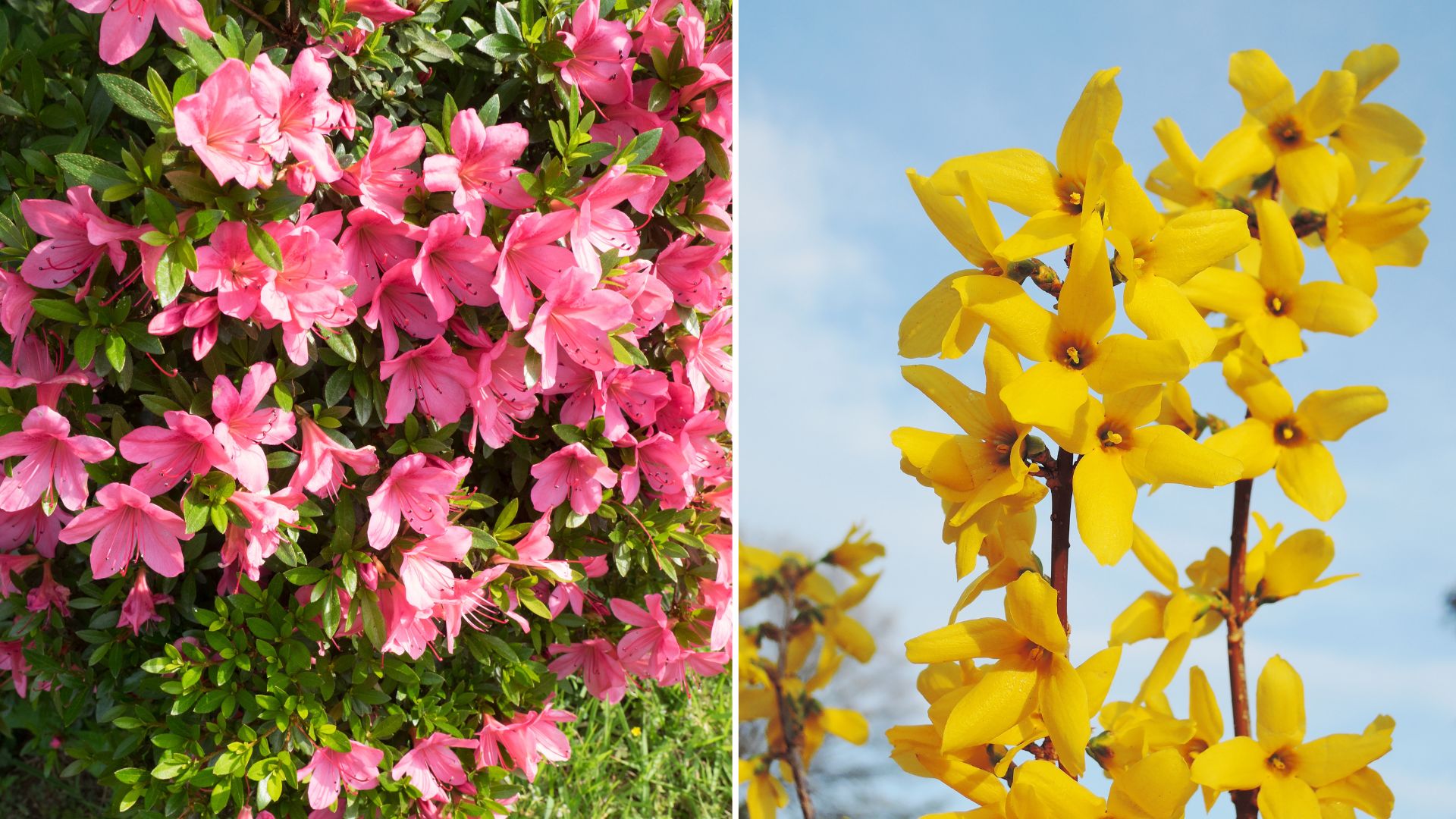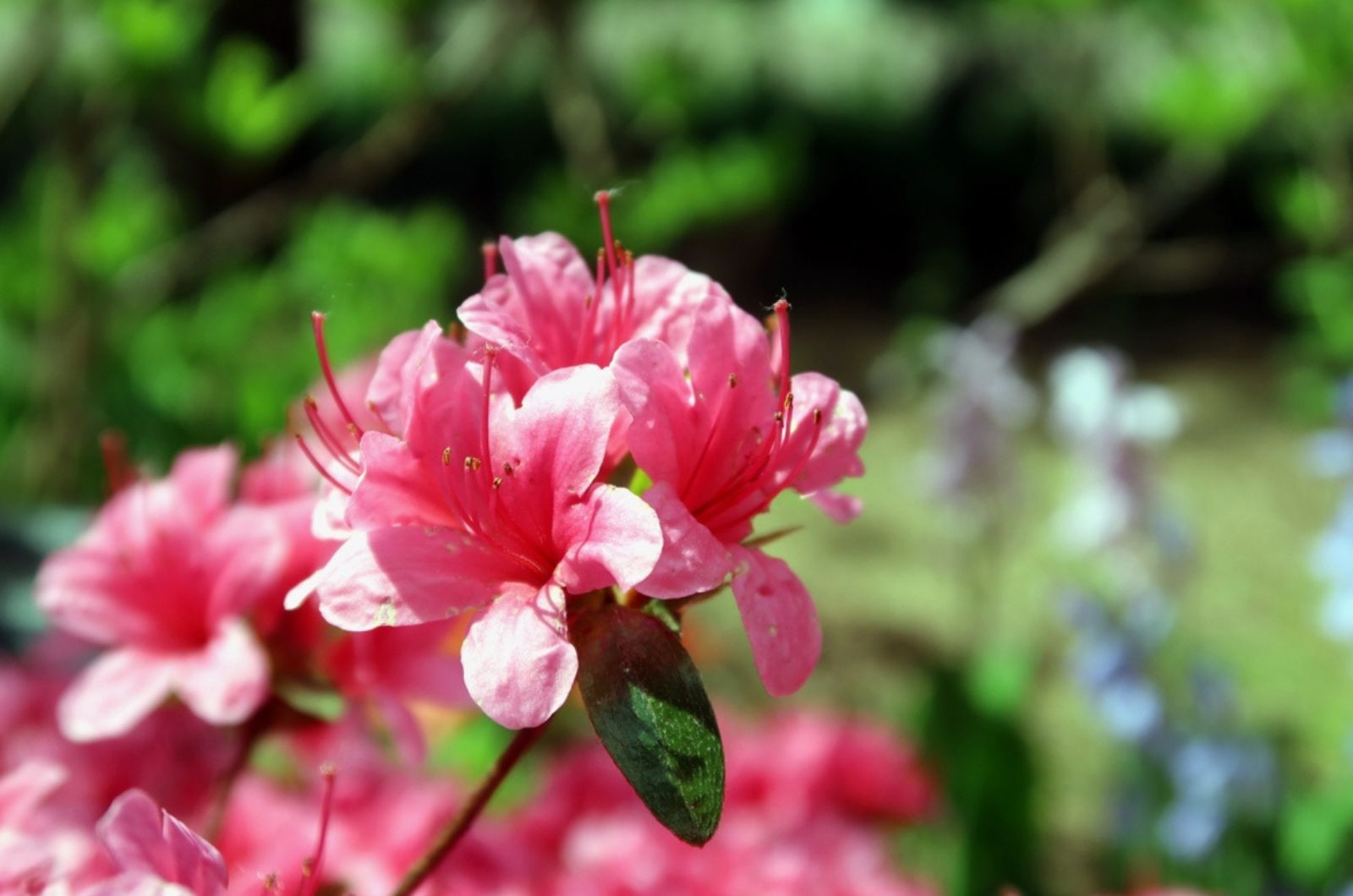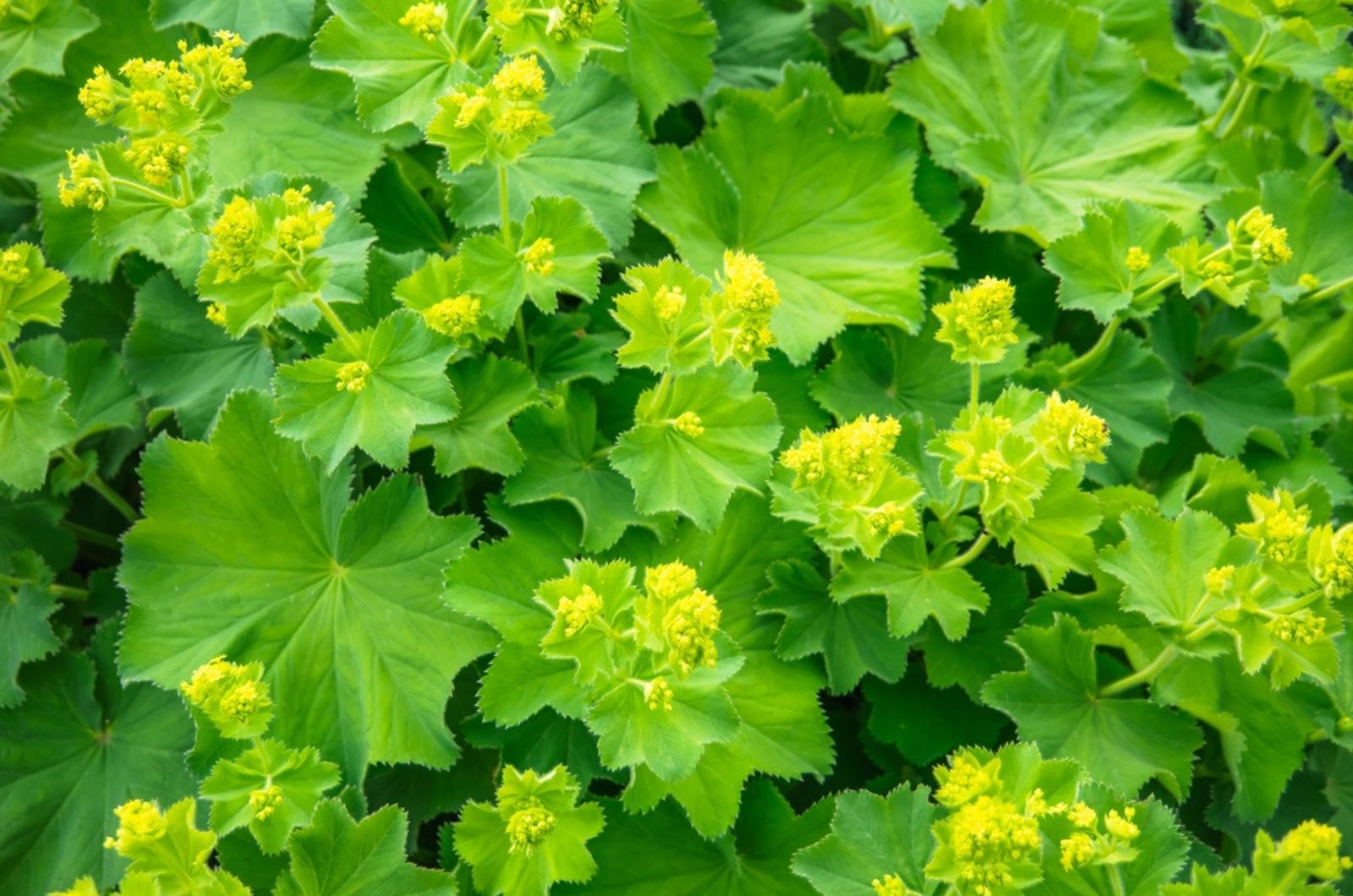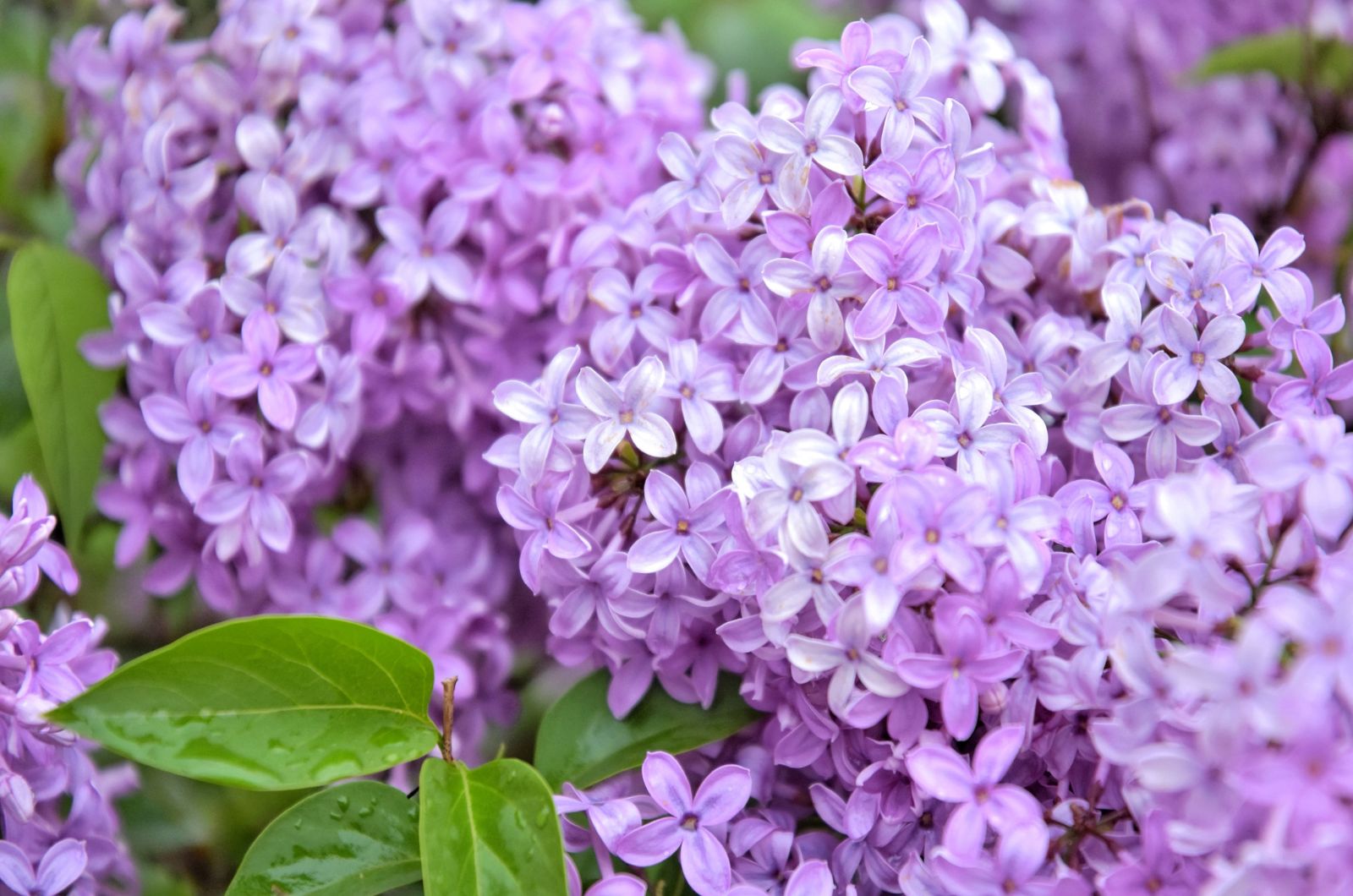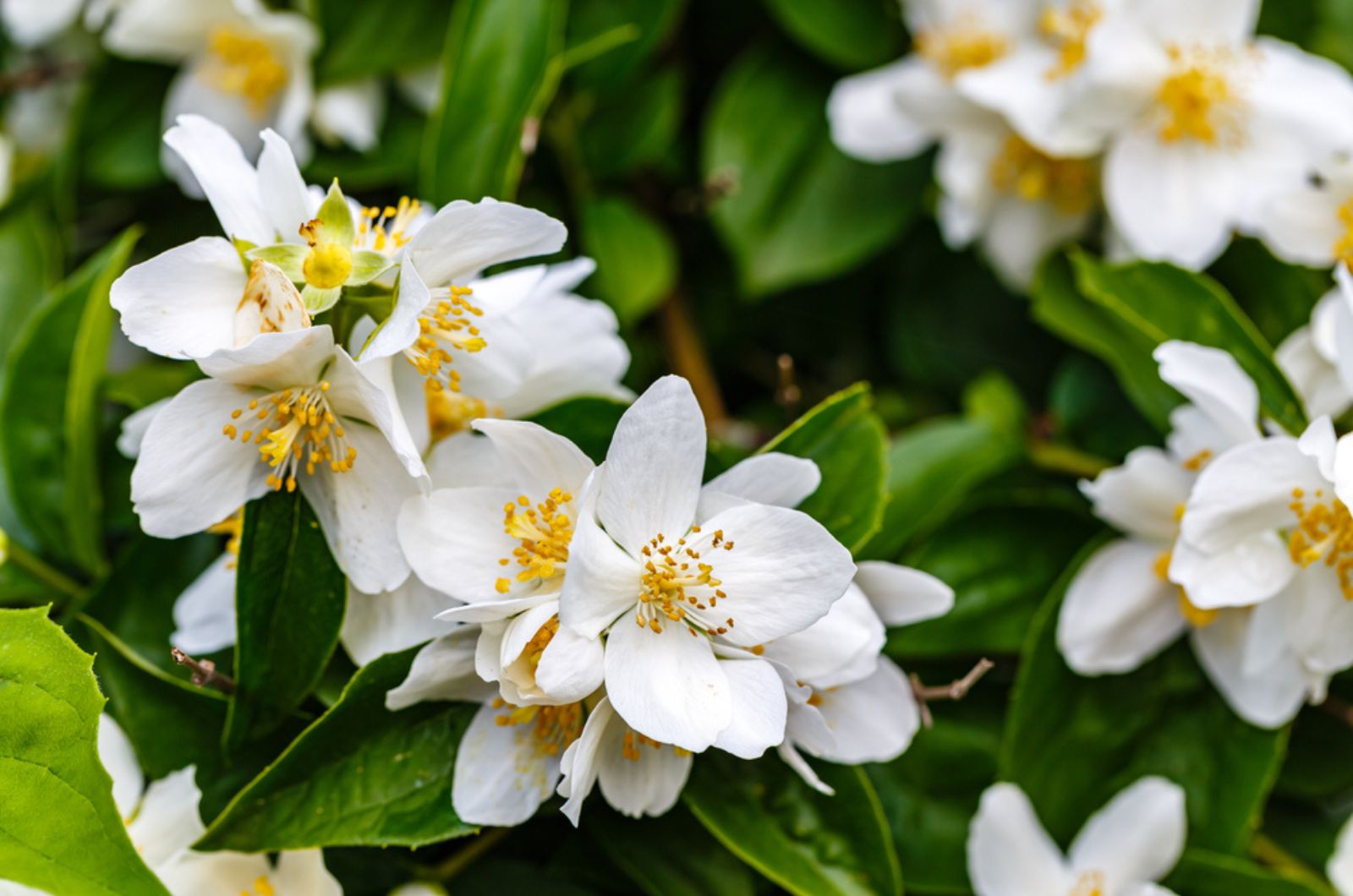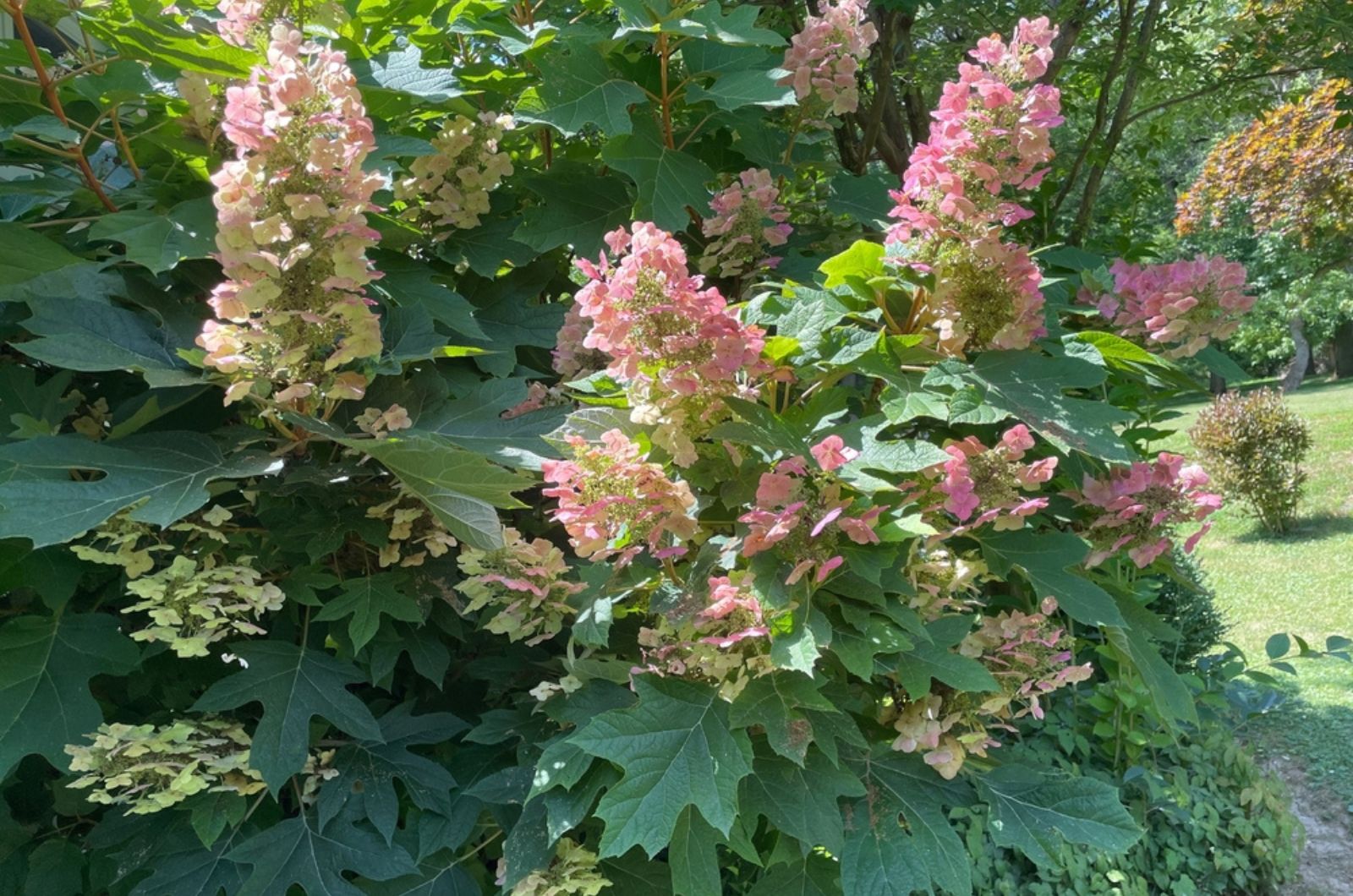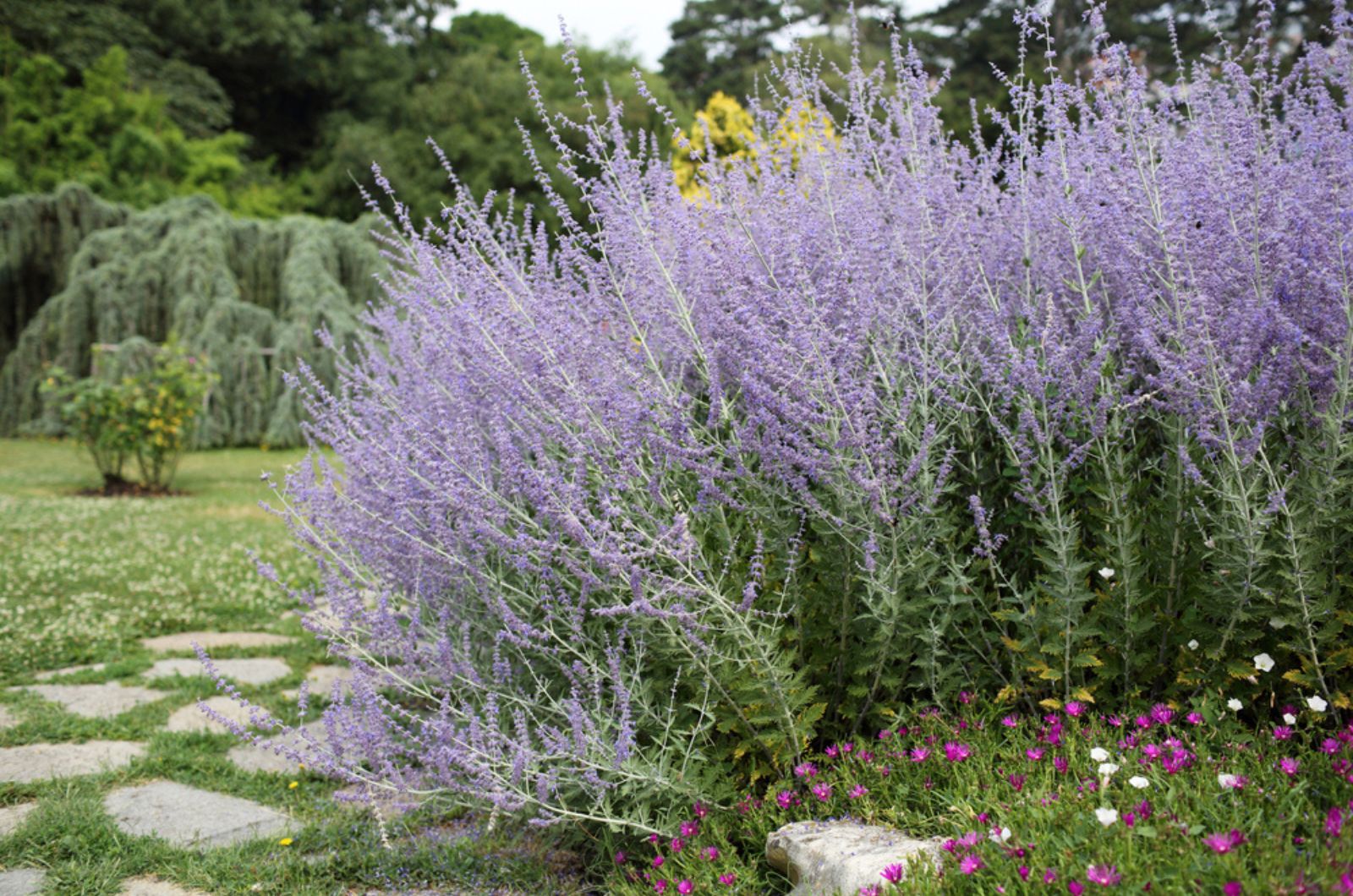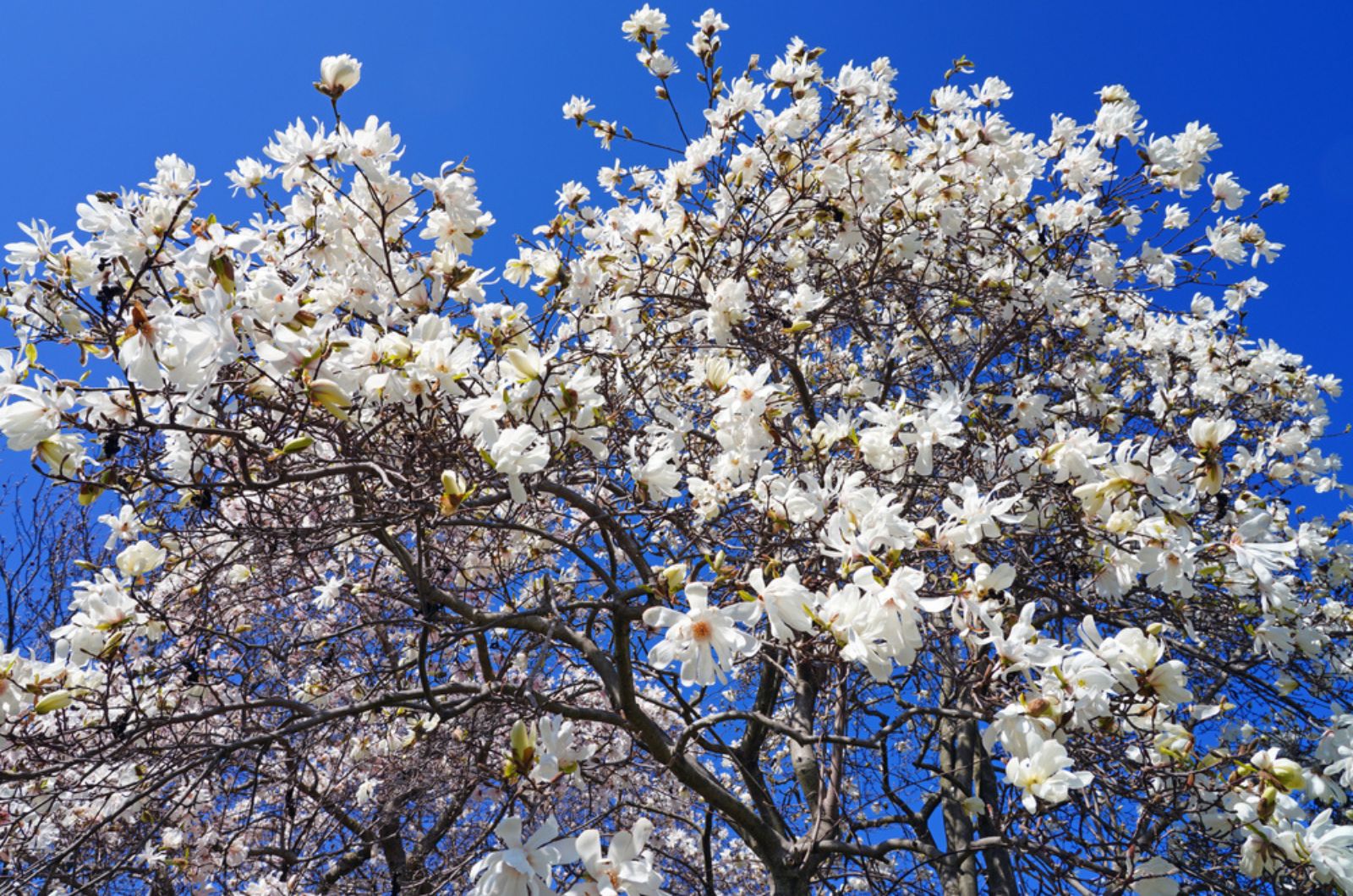Pruning and cutting back flowers at the right time can encourage them to produce a new flush of blossoms or prevent them from harboring pests and diseases such as mildew, leaf spot, etc.
So how do we know when to cut them back?
Many flowers, such as coneflowers, bleeding hearts, and shasta daisies, benefit from being cut back in fall.
But not all plants are the same! The following flowers prefer to be pruned in spring or immediately after they finish flowering.
Why? Find out below!
1. Azaleas And Rhododendrons
Azaleas and rhododendrons belong to the same family and, therefore, have similar trimming requirements.
You should only prune them heavily after they finish blooming, so at the end of spring or the beginning of summer. Make sure to prune them no later than three weeks after flowering, and all will be good.
That’s because these shrubs flower on old wood. They will set their flower buds until the end of August, and if you prune them in fall, all that will be gone and you’ll have no blossoms the following year.
Also, don’t forget to fertilize azaleas and rhododendrons properly to get the highest quality and most abundant blossoms.
2. Forsythia
This shrub, just like the previous two, needs to be cut back after it finishes flowering because it sets buds on old wood. Prune it in the fall, and you’ll get little-to-no blossoms the following season.
Additionally, it is a fast grower that may overtake your garden if you don’t control it, so you shouldn’t neglect trimming it.
Finally, even though it may get tall, never remove more than 1/3 of the entire plant because that may cause it stress and put it in a state where it gets infested with pets and infected with diseases more easily.
3. Lady’s Mantle
This English cottage garden staple is the perfect plant for wilder settings because it doesn’t need pruning at all and you can just let it roam around.
However, if you want to keep your yard neat and tidy, you can give it a light trim in early spring, just like you would for your rosemary, lavender, and sage.
Pruning it late in the season can make it more vulnerable to winter damage, which is why you should avoid fall trimming at all costs.
4. Lilacs
Lilacs can get quite tall, so you should trim them from time to time to maintain their height. Also, it can stop producing gorgeous conical flowers if it turns all woody, so don’t forget to cut it back when the time comes.
When is that, you may ask? Well, it’s right after it finishes flowering, so towards the end of spring or the beginning of summer.
Just like azaleas, rhododendrons, and forsythia, lilacs flower on old wood and set their flower buds until fall. If you prune them before winter, you won’t get any blossoms the next year.
Therefore, always cut them back within 3-4 weeks after they flower just to be sure you’re not removing any buds.
P.S. You can use some cuttings for propagating lilacs and get more of these fragrant shrubs.
5. Loropetalum
Loropetalum, aka Chinese fringe flower, is a unique plant on this list because it blooms both on old and new wood.
That still means you should prune it right after flowering so as not to risk the removal of flower buds.
But there’s also this. After the flowers on old wood are all gone, new wood will produce a new flush of blossoms, extending its blooming season and keeping the loropetalum gorgeous for longer.
Pruning tips: When cutting back this plant, remove dead, diseased, and damaged plants together with shoots that take away from the whole appearance.
6. Mock Orange
Mock orange is prized for its fragrant flowers which go along quite well with viburnum, lilacs, and forsythia.
And just like these plants, it shouldn’t be trimmed in fall.
It is another plant that produces blossoms on old wood, and pruning it in fall would be detrimental for your next year’s flowers.
Therefore, cut it back at the end of spring or the beginning of summer; that’s when this plant stops flowering and it’s the perfect time to do some pruning.
7. Oakleaf And Similar Hydrangeas
There are 6 main types of hydrangea, and they can be a bit confusing to prune because they don’t have the same requirements.
Oakleaf hydrangeas, for instance, flower on old wood and need to be pruned right after they finish blooming. Climbing, mountain, and bigleaf hydrangeas also fall into this category.
Smooth and panicle hydrangea varieties produce blossoms on new wood, so you can prune those in fall.
Just remember that hydrangeas in general don’t require heavy pruning in order to flower, but you can remove about a third of the growth if you want.
8. Russian Sage
Like lavender and rosemary, Russian sage is prized for its fragrant flowers and foliage. It does require heavy pruning to avoid becoming woody, but fall trimming isn’t the best option.
It can make it susceptible to frost damage, especially if it produces new and delicate growth before that.
For that reason, always prune Russian sage in late winter or early spring before you notice it’s woken up from dormancy and started putting on new growth.
This will cause the least amount of stress to your plant and keep it thriving.
P.S. Since we keep these perennials outside all year long, make sure to mulch it to help it survive harsh conditions.
9. Star Magnolia
Early bloomers like star magnolias usually blossom on old wood – at least that’s the case with this one.
If you cut it back in fall, winter, or early spring, you risk removing all the flower buds the plant has set the previous summer.
That means no blossoms once its blooming time arrives.
Therefore, prune your star magnolia after it’s done flowering, some time within the first three weeks or so. The shrub won’t set flower buds at that time, so you risk nothing.
Pruning tips: Remove the bottom branches to shape the star magnolia into a tree and cut all the diseased and canker-bearing branches to keep it healthy.
10. Viburnum
Viburnum is another plant that flowers on old wood, which is why you should avoid pruning it in fall.
It sets new buds in the summer that will open the following year, so cutting it back in fall or winter will result in poor flowering the next spring.
Rather, cut back your viburnum after it finishes flowering, which will keep it in shape and encourage it to produce more buds that will open the following season.

